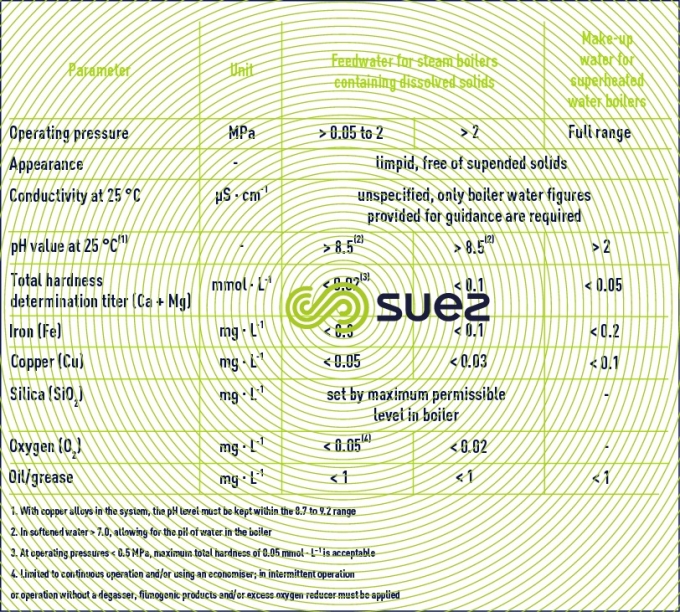Most boiler systems have sodium zeolite softened or demineralized makeup water.
Steam boiler water hardness.
Total alkalinity 600 ppm maximum.
A low pressure fire tube boiler can usually tolerate high feed water hardness with proper treatment while virtually all impurities must be removed from water used in some modern high pressure boilers.
Non volatile toc total organic carbon oily matter.
Feed water boiler water characteristics as per is 10392 1982 1 feed water parameters upto 20 kg cm2 21 kg cm2 to 39 kg cm2 40 kg cm2 to 59 kg cm2 unit total hardness 10 1 0 0 5 ppm as caco 3 ph value 8 5 9 5 8 5 9 5 8 5 9 5 dissolved oxygen.
Water treatment recommendations vary depending on the operating pressure of the boiler the application steam or hot water and other parameters.
General guidelines to prevent corrosion and scaling in low pressure boilers are as follows.
Colloidal substances contamination of boiler water with a colloid in suspension for example.
The concentration of minerals in the water is referred to as the water hardness.
Colloidal particles are less than 0 000 1 mm in diameter and.
In order for this reaction to take place it is important to maintain a ph at a minimum value of 9 50.
Colormetry hardness detector prevent water hardness damage to your boiler with miura s colormetry hardness detection system.
Total silica 150 ppm maximum.
Feed water purity requirements therefore can vary widely.
For boiler water the conductivity increases at the rate of approximately 2 of the value at 25 c for every 1 c increase in temperature.
This can be written as.
Another reason that the loss of hot boiler water is serious is because it increases the humidity in the boiler room and will contribute to the malfunction and failure of electrical controls safety devices and other electrical equipment.
Broken down by feed water and boiler water and then by firetube.
It is desirable to keep the concentration of phosphates in the water to 30 50 ppm in order for complete reaction of the phosphates with the calcium hardness entering the.
This value will limit the silica content of the steam to 0 25 ppm as a function of selective.
An increase in temperature results in an increase in electrical conductivity.
Water hardness levels are typically checked manually through the use of chemical reagents but such measurements are time consuming and can result in incorrect readings.
Total hardness 1 ppm maximum.
A boiler water sample has an unneutralised conductivity of 5 000 μs cm at 25 c.
Feedwater hardness usually ranges from 0 01 to 2 0 ppm but even water of this purity does not provide deposit free operation.
The quality of feedwater required is dependent on boiler operating pressure design heat transfer rates and steam use.
Phosphates are used to react with calcium hardness in the boiler water.

